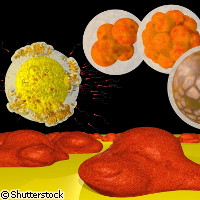EU study finds potential ES cells replacement falls short
In 2007, scientists discovered human induced pluripotent stem cells (iPS cells). Just like embryonic stem cells (ES cells), iPS cells can self-renew and turn into any kind of cell or tissue. The added advantage is that they carry almost none of the practical and ethical limitations that hinder ES cell research. A new study has found, however, that iPS cells do not have the same scope for use in some applications. The findings were presented at an event hosted by the ESTOOLS ('Platforms for biomedical discovery with human ES cells') project, which was funded EUR 12 million under the 'Life sciences, genomics and biotechnology for health' Thematic Area of the EU's Sixth Framework Programme (FP6). The landmark discovery of iPS cells signaled new hope for science. The key difference to ES cells is that the cells are obtained by genetically reprogramming an individual's somatic cells. By eliminating the concerns that surround the use of ES cells, iPS cells provide the opportunity for use in research and regenerative medicine and as models for diseases that cannot be easily studied in humans. Nevertheless, questions remain if iPS cells do in fact have the same application capacity as ES cells. Results of a study conducted by the Hebrew University of Jerusalem in Israel (an ESTOOLS partner) and the Children's Hospital Boston in the US suggest they are not able to entirely replace ES cells in some basic research and clinical applications. The research findings were published in the May issue of Cell Stem Cell and presented in Lisbon, Portugal at the 'Stem Cells in Biology and Disease' International Symposium in May 2010. The symposium was organised by ESTOOLS, which represents the largest European consortium of researchers studying human embryonic stem cells (22 partners in total; 19 academic research institutes and 3 companies). In the study, the team compared properties of iPS cells obtained from the skin cells of people affected by fragile X syndrome (the most common form of inherited mental impairment among males), with those of ES cells with the same genetic defect (isolated from embryos). They found that FMRI (the fragile X gene) was active in ES cells but not in iPS cells. The lead author of the study, Hebrew University of Jerusalem's Dr Nissim Benvenisty, said: 'We saw a difference between iPS and embryonic stem cells, although they have the same mutation.' He noted that the results might underline a more general phenomenon of epigenetic differences between the two. 'Until we understand better the differences between these two types of cells, the optimal approach might be to model human genetic disorders using both systems, whenever possible,' Dr Benvenisty added. Professor Peter Andrews from the University of Sheffield in the UK agreed that Dr Benvenisty's findings show that ES cells and iPS cells are complementary tools that in some cases may give different insights into fundamental disease processes. 'They emphasise the importance of continued research with both types of pluripotent human stem cells. The results also confirm the value and importance of European funding of research consortia like ESTOOLS,' Professor Andrews explained. The ESTOOLS project is coordinated by the University of Sheffield. The symposium that took place between 26 and 28 May 2010 brought together international experts to exchange the latest advances in human stem cell research. The 'Third Ethics Workshop' was a parallel event, organised by ESTOOLS participant Göran Hermerén of the Lund University in Sweden and the European Group on Ethics in Science & New Technologies (EGE). A number of public outreach events also took place, including the play Staminalia, and the Smile of a Stem Cell photographic exhibition.
Countries
Israel, United States



